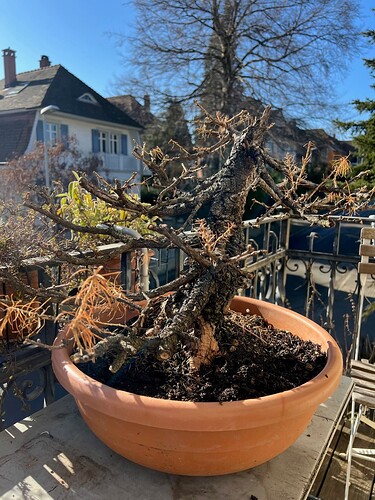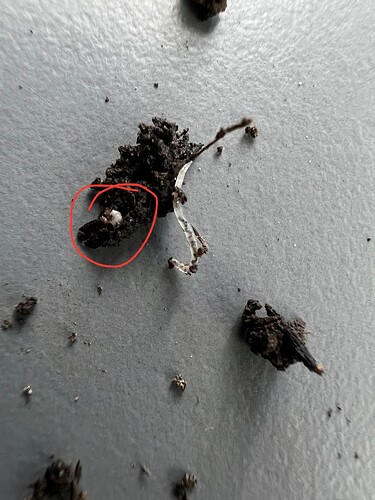Hey Guys
Hope you are all excited for the upcoming spring here on the northern hemisphere.
Recently, I bought two old yamadoris out of the swiss alps (I’m living in Germany, on the border to Switzerland): a European larch and a Sabina juniper.
They were both collected last year and have been growing the whole last year through.
As both trees have been planted in mostly or even fully organic soil, I was thinking about to do the first, out of two or three repots this spring in order to get more balance of water and oxygen for the roots. I`m afraid that these trees will have a to wet soil and will suffer from that. That’s why I’m thinking about to put the outer of the roots in a akkadama/pumice mix and letting the core as it is for this year.
Do you think this is possible for both of the trees this year or should I wait until next year?
In addition, I observed some little white worms in the soil of the European larch, probably because of the high organic soil. Do you think they will be harmful to the roots and should I act against them while repotting (if I should do so this year)? My concern with some pesticides are that the roots respectively the trees are not strong enough already to cope with that.
Thank you all for your help!
The closest image I found are fungus gnats?

Translucent with dark head.
They like overly moist conditions so that matches with your description.
So do not let the soil remain too moist. Some control strategy are to trap or add lime to make the pH less desirable.
I searched on entrachyadids.
So sticky traps, cider vinegar to kill gnats and a mosquito dunk with Bacillus thuringiensis subsp. Israelensis to kill the grubs.
The articles I have read say they eat roots so control is advised.
NICE LOOKING PLANTS!
Hope you have a wonderful spring.
Thank you for your help and research!
I will definitely do a ph test and keep the soil drier.
I was able to isolate a worm and examine it more closely (see photo). They do not have a black head but are white throughout and are about 1/4 inch in size.
Do you think repotting in a few weeks will help , so when the buds open slightly or is it too early for the a Yamadori?
That way I could control the soil composition and get a better oxygen/water balance and it would be easier to control the high moisture.
I hope you have a wonderful spring too!
All depends on the health of the tree and aftercare. If the plant is healthy and you do not bare root. So I refer you to the species care under education on the MIRAI site. Only larch I found is Japanese. … so info following is from Ryan regarding Japanese larch.
Repotting
Some nuances should be considered when repotting the Japanese larch. Like the hemlock, the Japanese larch has a bad reputation for being root sensitive. As mentioned before, this root sensitivity is due to the high water mobility of this elongating species and the fact that the strength exists in the vascular system.
And it’s all about timing:
● You can heavily reduce the roots if you have not pruned the branches.
● You can heavily reduce the branching if you have not pruned the roots.
Repotting the Japanese larch is possible, especially if you are repotting a strong tree. Right as the first bud starts to show green, you have a seven-day window to maximize any sort of severity in the repotting process.
It’s not recommended to repot before that timeframe.
Me back again…
Select EDUCATION on the top bar and select species care.
a BT soak would not hurt the soil and could reduce worms until it is safe to repot the larch.
I have no experience with Sabina Junipers…
Just an opinion from an hobbist!!!
I’m not sure what your worms are, but I would wait another year before repotting. It’s generally recommended to give a collected tree at least two years after collection before repotting. Just watch your watering this year so that they don’t stay too wet.
I have no clue on the worm. But as a sanity check is that a grub?
If it is then could be vine weevils and I would be far more concerned.
https://www.rhs.org.uk/biodiversity/vine-weevil
They came up in this Live Q&A last year, 10 minutes in, with some suggestions for treatment.








